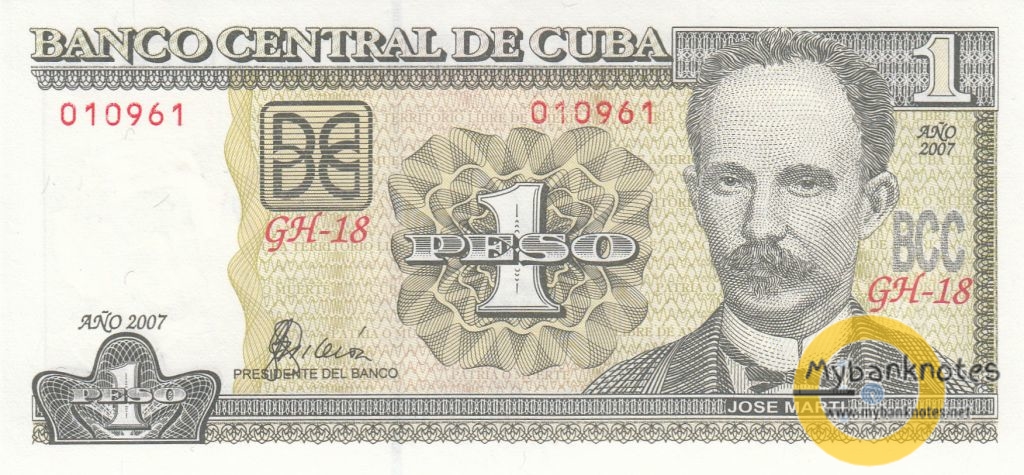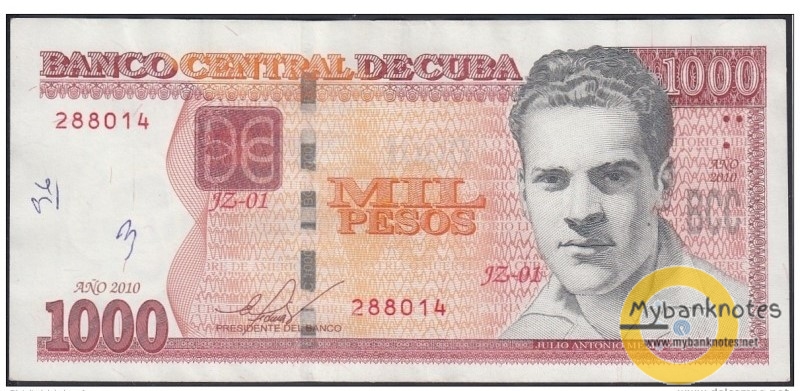Sưu tập tiền “Cấm” của Cuba
Sưu tập tiền “Cấm” của Cuba – Collecting the so-called ‘forbidden’ notes of the island nation of Cuba
Khi Hoa Kỳ bắt đầu có những mối quan hệ tốt với quốc đảo Cuba, các nhà sưu tập người Mỹ bắt đầu tự hỏi liệu họ có thể tự do thu thập tiền giấy mà Cuba đã phát hành kể từ Cách mạng và chế độ độc tài dưới thời Fidel Fidel, và sau đó là anh trai của ông, Raul. Hiện tại, tình hình chưa cải thiện, tại Hoa Kỳ vẫn có khó khăn để sưu tầm tiền giấy, hay xu của Cuba nhiều khi phải trả một cái giá rất đắc.
As the United States begins to repair its relations with the island nation of Cuba, American collectors begin to wonder whether they will be able to freely collect the paper money Cuba has issued since the Revolution and dictatorship under Fidel Castro, and subsequently his brother, Raul. It is still illegal for U.S. citizens to import numismatic collectibles from Cuba, including coins and paper money, but such material somehow manages to make its way to American soil. Many notes can be obtained for a few dollars each, up to several hundred dollars each for rare notes or varieties.
Khi ở đây, các mặt hàng được chào bán đấu giá công khai trên mạng, trên các sàn giao dịch tiền xu và các địa điểm khác. Ngoại trừ eBay, nơi áp đặt lệnh cấm bán vật sản phẩm từ Cuba. Francis X Putrow, một cựu chủ tịch của Hiệp hội Số học Cuba , gần đây đã nói rằng tất cả mọi thứ giữa Hoa Kỳ và Cuba là chưa thay đổi. Hiểu biết của tôi là không có thay đổi nào liên quan đến lệnh cấm vận của Cuba, ông Put Putrow nói. Đây sẽ là một hành động của Quốc hội để chính thức dỡ bỏ lệnh cấm vận. Cho đến lúc đó, tôi không mong đợi eBay sẽ chính thức thay đổi chính sách của họ về việc không niêm yết tiền Cuba, tiền giấy, v.v. Tuy nhiên, một vài danh sách có thể được tìm thấy trên eBay ngày hôm nay.
Once here, the numismatic items are offered for sale at public auction, on coin show bourses and other venues. Except for eBay, which imposes a ban on the sale of Cuban numismatic material. Francis X Putrow, a past president of the Cuban Numismatic Association, said recently that just about everything between the U.S. and Cuba is status quo. “My understanding is that there have been no changes regarding the Cuban embargo,” Putrow said. “It will take an act of Congress to officially lift the embargo. Until then, I would not expect eBay to officially change their policy of not listing Cuban coins, paper money, etc. However, a few listings can be found on eBay today.” Another past CNA president, Emilio M. Ortiz, provided additional insights. “eBay has not relented in their improper and draconian blockade of Cuban numismatic material listings at their site, Ortiz said. “The material they are blocking includes currency printed by the U.S. [Bureau of Engraving and Printing] as well as banknotes printed by ABNCo [American Bank Note Company] and TdeLR [Thomas de la Rue].
Theo luật pháp, lệnh cấm vận vẫn còn hiệu lực và chỉ có thể bị thu hồi bởi một đạo luật của Quốc hội, tuy nhiên các chuyên gia pháp lý đã tuyên bố nhiều lần rằng tài liệu số đó bị LOẠI TRỪ, ngay cả từ thời Fidel Fidel (cộng hòa thứ 2, em trai ông lãnh đạo ) miễn là nó không được mua trực tiếp từ bất kỳ thực thể nào của Chính phủ Cuba. Tổng số lệnh cấm của eBay đối với việc bán hàng trên công nghệ số của Cuba đã được áp dụng có hiệu lực từ ngày 9 tháng 4 năm 2013. Mark Flaa, người quản lý danh mục của eBay về vàng thỏi, tiền xu và tiền tệ, cho biết ngày 22 tháng 1 năm 2016, rằng trang web đấu giá trực tuyến vẫn đang chờ xem hành động nào, nếu có, Quốc hội và Bộ Ngoại giao sẽ cho phép eBay hạn chế hay hủy bỏ một phần lệnh cấm. Mặc dù lệnh cấm được áp dụng đối với phiên bản ebay tại Hoa Kỳ, một số phiên bản – có thể được lưu trữ ở nơi không có lệnh cấm của chính phủ – từ các quốc gia khác vẫn hiển thị danh sách các mặt hàng của Cuba. Một kiểm tra gần đây cho thấy danh sách từ người bán ở Canada, Tây Ban Nha, Argentina, Croatia và Cộng hòa Séc.
“As far as the law is concerned, the embargo is still in effect and can only be revoked by an act of Congress, however legal experts have stated over and over that numismatic material is EXCLUDED, even from the Fidel Castro period (2nd. Republic) as long as it was not directly purchased from any Cuban Government entity.” The total ban by eBay on the sale of Cuban numismatic material was imposed effective April 9, 2013.
Mark Flaa, eBay’s category manager for bullion, coins, and currency, said Jan. 22, 2016, that the online auction site is still waiting to see what action, if any, Congress and the State Department will take that would allow eBay to lift its ban on Cuban numismatic items. While the ban is imposed on the U.S. version of the eBay website, some versions — possibly hosted where no governmental bans are in place — from other countries still show listings of Cuban numismatic material. A recent check showed listings from sellers in Canada, Spain, Argentina, Croatia, and the Czech Republic.
Trừng phạt khi nào? – In the beginning
Các lệnh trừng phạt của Mỹ đã được áp đặt hơn 50 năm trước. Vào tháng 3 năm 1962, chỉ hơn ba năm sau khi Fidel Castro đắc thắng và những người cách mạng đồng hành đã tiến vào Havana và thành lập một chính phủ mới, Fidel tuyên bố chính phủ Cuba sẽ hoạt động như một chế độ Cộng sản.
Tuyên bố của Fidel Castro, cùng với các cuộc xung đột khác giữa Hoa Kỳ và Cuba, bao gồm cuộc xâm lược Vịnh Con heo năm 1961, dẫn đến luật cấm vận hơn đối với Cuba được thông qua và có hiệu lực vào ngày 8 tháng 7 năm 1963. Lệnh cấm vận đầu tiên của Hoa Kỳ đối với Cuba đến ngày 19 tháng 10 năm 1960, sau khi Cuba quốc hữu hóa các nhà máy lọc dầu Cuba thuộc sở hữu của Mỹ mà không phải bồi thường.
Các lệnh trừng phạt của Mỹ vẫn có hiệu lực, ngăn công dân Hoa Kỳ nhập khẩu hoặc xuất khẩu hợp pháp bất kỳ tài liệu số nào của Cuba được ban hành sau ngày cấm vận năm 1962. Hiện tại, các lệnh trừng phạt của Mỹ đối với Cuba được thi hành thông qua sáu đạo luật khác nhau và việc sở hữu hoặc thu thập những vật phẩm này là bất hợp pháp. Trong cả hai trường hợp, công dân Hoa Kỳ được khuyến khích tuân thủ các quy định này, vì các hình phạt nghiêm khắc, hình phạt và thậm chí tịch thu có thể được áp dụng đối với người vi phạm.
The U.S. sanctions were imposed more than 50 years ago. In March 1962, a little more than three years after a triumphant Fidel Castro and fellow revolutionaries marched into Havana and established a new government, Castro announced Cuba’s government would operate as a Communist regime. Castro’s declaration, coupled with other conflicts between the United States and Cuba, including the Bay of Pigs invasion in 1961, resulted in more embargo legislation against Cuba being passed and becoming effective on July 8, 1963.
The first embargo by the U.S. against Cuba came Oct. 19, 1960, after Cuba nationalized the American-owned Cuban oil refineries without compensation. The U.S. sanctions remain in effect, preventing U.S. citizens from legally importing or exporting any Cuban numismatic material issued after the 1962 embargo date. Currently, U.S. sanctions against Cuba are enforced through six different statutes. In the October 2004 issue of the Cuban Numismatic Association Newsletter, Richard Becker writes, “Some U.S. citizens interpret the law that it is illegal to own or collect these items. In either case, U.S. citizens are urged to adhere to these regulations, since strict fines, penalties, and even confiscation may be imposed on violators. Collectors who reside in other countries not affected by the U.S. embargo sanctions have a large selection of Cuban revolutionary bonds and bank notes to choose from and should consider collecting these interesting Cuban currencies, Becker suggests.
Viva la revolución
Trước khi quan hệ ngoại giao giữa Hoa Kỳ và Cuba trở nên tồi tệ sau khi Fidel Castro lên nắm quyền, hai quốc gia đã có quan hệ chính trị, kinh doanh, xã hội và tiền tệ chặt chẽ – Hoa Kỳ thậm chí còn hỗ trợ Cuba sản xuất tiền xu và tiền giấy cần thiết. Sau đó, Cục Khắc và In đã sản xuất một loạt tiền peso. Những tờ tiền này được sản xuất theo yêu cầu của Bộ Ngoại giao Hoa Kỳ bắt đầu vào năm 1934, với các đợt giao hàng cuối cùng được thực hiện vào năm 1950.
Năm 1954, sau khi được các quan chức chính phủ Cuba khuyên rằng không cần thêm tiền bằng peso nữa, Bộ Tài chính Hoa Kỳ đã hủy bỏ và phá hủy tất cả các khuôn, dấu, in ấn và các dụng cụ khác được sử dụng để in các tờ tiền Cuba, theo Lịch sử Cục Khắc và In 1862-1962. Các ghi chú được in trên giấy có chất lượng tương đương với tiền giấy của Hoa Kỳ, ngoại trừ giấy bảo mật cho các tờ tiền Cuba được nhúng chỉ bằng các mảnh sợi tơ đỏ, không giống như giấy an ninh Hoa Kỳ, có cả màu xanh và đỏ.
Hầu hết sản xuất BEP này cho Cuba đã được thực hiện cho chính phủ do Fulgencio Batista Zaldívar, một đồng minh của Hoa Kỳ điều hành. Batista là tổng thống dân cử của Cuba từ năm 1940 đến 1944, sau đó cai trị với tư cách là nhà độc tài từ năm 1952 đến năm 1959, trước khi bị lật đổ trong cuộc Cách mạng Cuba do Fideli lãnh đạo. Trong những năm đầu của cuộc chiến chống lại chế độ độc tài của Batista, Fidelidel đã gây quỹ bằng cách phát hành một loạt trái phiếu khác nhau. Những trái phiếu hiện có thể thu được được phát hành từ năm 1950 đến 1958, theo Becker. Sau khi chiến thắng vào Havana vào ngày đầu năm mới, 1959, Fidel đã tiến hành thành lập chính phủ mới của mình, bao gồm các điều khoản để in các tờ tiền của Cuba.
Before diplomatic relations between the United States and Cuba soured after Fidel Castro rose to power, the two nations had close political, business, social and monetary ties — the United States even assisted Cuba in the production of needed coins and paper money. Of the latter, the Bureau of Engraving and Printing produced a series of five notes denominated in pesos. These notes were produced at the request of the U.S. State Department beginning in 1934, with the last deliveries made in 1950.
In 1954, upon being advised by Cuban government officials that no more peso-denominated notes were needed, the U.S. Treasury Department canceled and destroyed all of the dies, seals, printing plates and other tooling used to print the Cuban notes, according to History of the Bureau of Engraving and Printing 1862-1962. The notes were printed on paper of the same quality as U.S. paper money, except the security paper for the Cuban notes was embedded solely with fragments of red silk thread, unlike the U.S. security paper, which incorporated both blue and red.
Most of this BEP production for Cuba was executed for the government run by Fulgencio Batista Zaldívar, an ally of the United States. Batista was the elected president of Cuba from 1940 to 1944, then ruled as dictator from 1952 to 1959, before being overthrown during the Cuban Revolution led by Castro. During the early years of Castro’s fight against Batista’s dictatorship, Castro raised funds by issuing several different series of bonds. These now-collectible bonds were issued between 1950 and 1958, according to Becker. After his triumphant entry into Havana on New Years Day, 1959, Castro proceeded to establish his new government, which included provisions for printing Cuban notes.
Đó là lý do ngày nay việc sưu tiền của Cuba rất khó khăn tại Hoa Kỳ và một phần trên thế giới. Lệnh cấm vận của Hoa Kỳ đối với Cuba đã một phẩn tác động các quốc gia khác và tất nhiên, sưu tầm tiền Cuba đã trở nên khó khăn hơn.
That’s why today the collection of Cuban money is very difficult in the United States and a part of the world. The US embargo against Cuba has had an impact on other countries and of course, the collection of Cuban money has become more difficult.


















